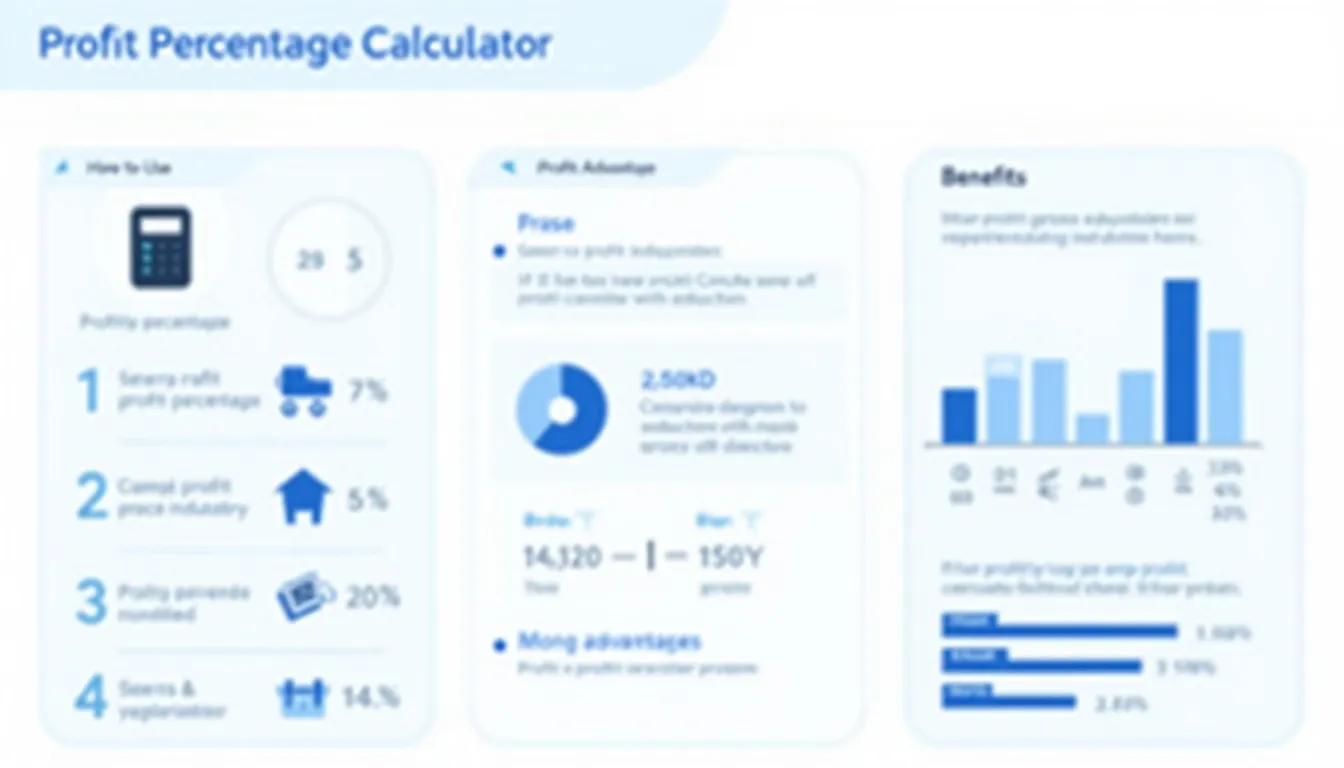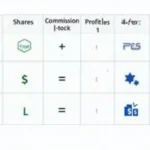Profit Percentage Calculator
Is this tool helpful?
How to use the tool
- Enter Total Profit: Type the money you gained after expenses. Example 1: $1,500. Example 2: $2,000.
- Enter Cost Price: Type what you spent to make or buy the item. Example 1: $6,000. Example 2: $4,500.
- Press “Calculate”: The tool divides profit by cost, then multiplies by 100 to show your percentage.
- Read the Result: You see profit, cost, and profit % side-by-side for quick comparison.
Formula
$$Profit\% = rac{Total\;Profit}{Cost\;Price}\times 100$$
Example A
$$Profit\% = rac{1{,}500}{6{,}000}\times 100 = 25\%$$
Example B
$$Profit\% = rac{2{,}000}{4{,}500}\times 100 \approx 44.44\%$$
Quick-Facts
- The formula above is the industry standard for gross profit margin (Investopedia, https://www.investopedia.com/terms/p/profit-margin.asp).
- Average U.S. small-business net margin: 7 % (Guidant Financial Report 2023, https://www.guidantfinancial.com).
- Retail sector gross margin averages 24 % (Damodaran Industry Margins 2023, http://pages.stern.nyu.edu/~adamodar).
- IRS guidance recommends ≥10 % margin to cover overhead (IRS Publication 334 2022, https://www.irs.gov).
FAQ
What does the calculator measure?
The tool shows how much profit you earn for every dollar spent, expressed as a percentage (Investopedia, url).
How is profit percentage different from markup?
Profit % uses cost as the base; markup uses selling price. A 50 % profit equals a 33 % markup (Investopedia, url).
Can a result be negative?
Yes—negative profit means a loss, signalling you sold below cost (Damodaran Margins 2023).
How often should you check profit percentage?
Run monthly or per product launch to spot margin trends quickly (Guidant Financial 2023).
What margin counts as “good”?
Many analysts call 20 % healthy and 30 % excellent, but compare against your industry average (Damodaran 2023).
Does currency affect the formula?
No—the ratio stays the same. Just use the same currency for both inputs (IRS Pub 334 2022).
Why use a calculator instead of spreadsheets?
It cuts setup time, removes formula errors, and displays instant results on any device (Investopedia, url).
How can you raise your profit percentage?
Increase prices, cut direct costs, or boost efficiency; “Margin analysis highlights whether operations generate adequate returns on invested capital” (OECD TP Guidelines 2022).
Important Disclaimer
The calculations, results, and content provided by our tools are not guaranteed to be accurate, complete, or reliable. Users are responsible for verifying and interpreting the results. Our content and tools may contain errors, biases, or inconsistencies. Do not enter personal data, sensitive information, or personally identifiable information in our web forms or tools. Such data entry violates our terms of service and may result in unauthorized disclosure to third parties. We reserve the right to save inputs and outputs from our tools for the purposes of error debugging, bias identification, and performance improvement. External companies providing AI models used in our tools may also save and process data in accordance with their own policies. By using our tools, you consent to this data collection and processing. We reserve the right to limit the usage of our tools based on current usability factors.







